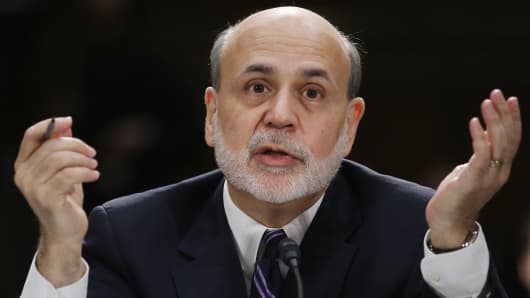Let's start with inflation. How strong is the support for adopting policy measures to address the undershooting of its inflation target? The Fed has maintained a 2 percent target rate but it has, in the past few years, often missed that target to the downside. The statement in July pointed this out.
(Read more: Is 'chaos' ahead? Some truths about Fed policy.)
"The Committee recognizes that inflation persistently below its 2 percent objective could pose risks to economic performance, but it anticipates that inflation will move back toward its objective over the medium term," the minutes said.
One important thing to watch will be the adjectives surrounding the phrase "participants" in connection with inflation. I discussedthe importance of this back in February, noting that participants is used in ways that are often "mysterious and even obscure."
The various viewpoints raised at the meeting are attributed to "participants" rather than identifiable individuals. This creates the initial level of obscurity: who are the participants?
The FOMC has twelve voting members—seven members of the board of governors of the Fed and five of the 12 Reserve Bank presidents. But all Reserve Bank presidents attend the meetings and participate in the discussions. It's not entirely clear but it is likely all 19 of these folks count as participants.
Actually, the Fed has since clarified this point. The June minutes specifically noted that all 19 count as participants.
The Fed doesn't release precise numbers in the minutes about how many participants in a meeting agreed with each position on the economy or policy. Instead, the minutes just hint at how popular a position is at the meeting by using (or omitting) vague qualifiers around the word participants.
On inflation, the last set of minutes told us that: "Most participants expected inflation to begin to move up over the coming year as economic activity strengthened, but many anticipated that it would remain below the Committee's 2 percent objective for some time."
(Read more: 'Bernanke Bubble'going bust in emerging markets)
Are there still enough Fed members who expect inflation to move up over the coming year to qualify for "most?" And do "many still" anticipate it will remain below target? Look for changes in either direction here, as well. If we get "many" participants expecting inflation to move up or "most anticipating" it will remain below target, that's a sign that concern about downside risk to inflation is spreading.
A more dovish view about inflation—that is, fewer participants thinking inflation will increase—could mean diminishing support for a September taper.
The labor market conditions should also be closely watched.
In the June minutes, "most participants" saw "slack in the labor market." They differed, however, about their confidence in future progress.
Does this difference persist? Will "most participants" still see slack or will the qualifier become "some participants?" A view that the labor market has less slack would likely add to support for a September taper.
(Read more: Fed message to markets: Don't fear the taper)
On general economic conditions "most participants" in the June minutes noted their support for the view that "growth of real GDP would pick up somewhat in the second half of 2013."
"Many participants"—which seems to indicate a smaller group than "most particpants"—saw "the downside risks to the medium-run outlook for the economy and the labor market as having diminished somewhat in recent months, or expressed greater confidence that stronger economic activity was in train."
And then we get "some participants" who noted that they "remained uncertain about the projected pickup in growth of economic activity in coming quarters."
Have the participants become more or less bullish about general economic conditions? Look for whether that "many participants" shifts to "most participants" seeing downside risks diminished. That will indicate increased fear of downside risk, meaning the Fed might take the taper more slowly.
Finally, we get to taper timing itself.
The minutes began by reporting that "most participants" saw the review of the Fed's "strategy for the eventual normalization of the stance of monetary policy and the size and composition of the Federal Reserve's balance sheet" as "prudent longer range planning." By contrast, "some participants" felt this discussion was premature.
(Read more: Fed officials worried about easing)
A shift here from "most participants" to "several participants" could indicate a movement a way from tapering, while a shift from "some participants" to "a few participants" could indicate a shift toward tapering.
Most. Many. Some. Few. Never has so much turned on so few adjectives.





